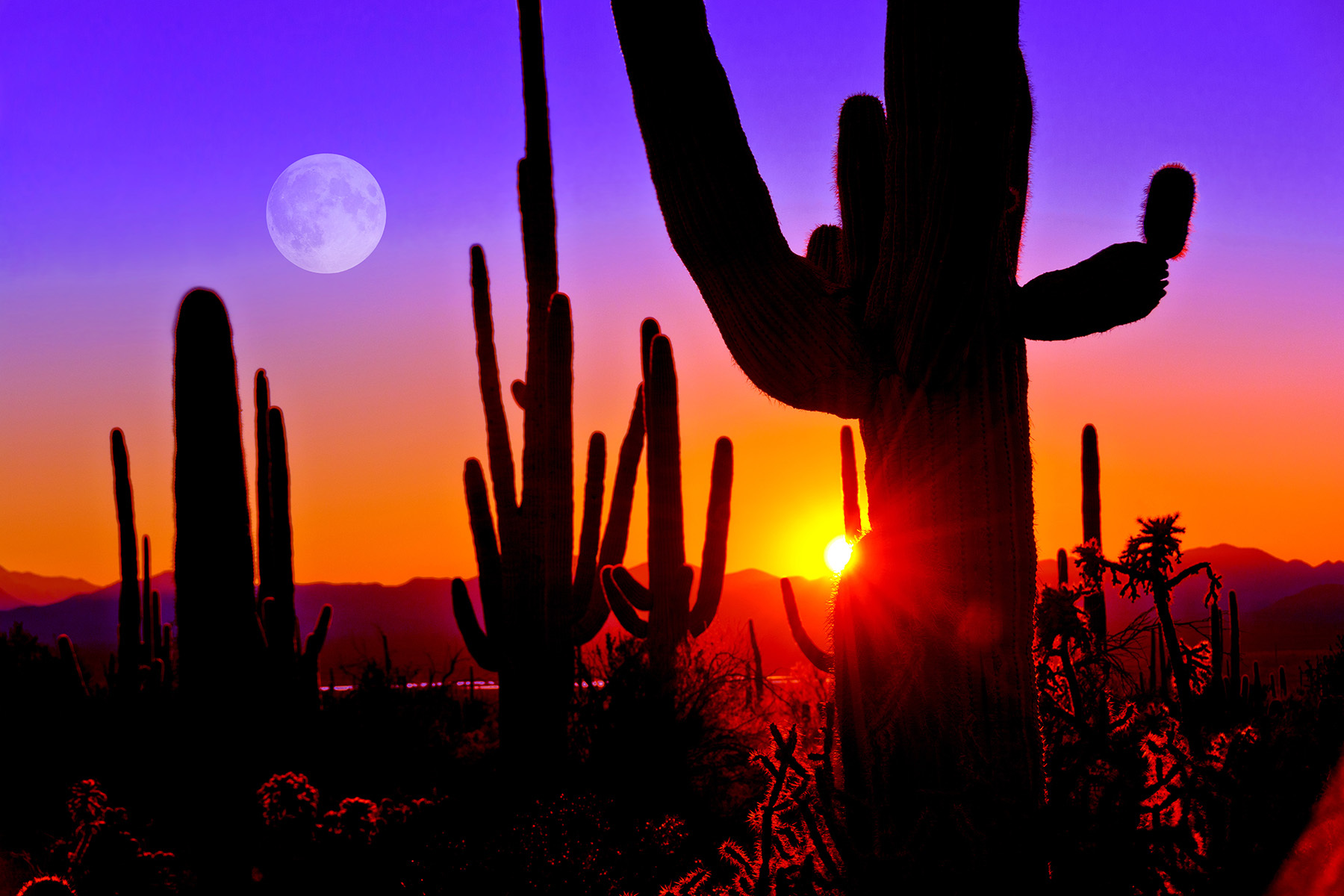Why Tucson, Arizona, Is Your Next Great Outdoor Adventure
From cactus-spotting in Saguaro National Park and biking down Mount Lemmon to mountains on all four sides and southwestern sunsets that seemingly last forever, Tucson is brimming with outdoor adventures—even skiing!
Here’s what you can expect before booking your first (or next) visit.
The cactus capital of the world
Tucson is known for its “friendly green giants,” a.k.a. Saguaro (pronounced “suh-wah-roe”) cacti that dominate the landscape. Whether you travel to the nearby national park or not, you will encounter them everywhere you turn, and you’ll be sure to admire both their height (up to 50 feet tall) and wondrous presence.
You can drive, hike, or bike among them and when seen at sunset or sunrise, they take on a timeless presence. In fact, they can live for over 200 years in ideal conditions.
Two national parks (sort of)
At the turn of the century, National Geographic endeavored to rank every national park in America. Much to the chagrin of nearby Grand Canyon, Saguaro National Park took the number one ranking.
Why? Navigating through towering green cacti that appear alive and guardian-like is a surreal experience. You’ll never see one move, but their humanoid stature suggests they’re just moments away from stepping across the horizon. The park is split into two sides, each with its own unique activities and topography. For more dense cacti, head to West Park. For paved scenic drives closer to the mountains, head to East Park.
Die-hard desert museum
Due to the extreme temperatures and lack of water, it takes one tough cookie to survive the Sonora and greater Arizona deserts. That fight for survival is on full display at the Arizona-Sonora Desert Museum, a 98-acre outdoor zoo, indoor aquarium, botanical garden, and natural history museum not far from the west entrance of Saguaro National Park.
With two miles of designated trails, shade cover, and ice cream on site, it’s an enlightening way to soak in both state and Tucson history.
Old West sunsets
You know those postcard photos of silhouetted cacti and palms in the foreground of a radiant pink-orange sky? That’s everyday life in Tucson with the mountains off to the west. For ideal views, head to Sabino Canyon just northeast of downtown.
Simply put, the clementine and purple sunsets here are amazing—some of the best we’ve ever seen. On a recent spring visit, the setting sun stopped us in our tracks every single evening during our five-day visit.
Massive mountain biking
Whether riding single-tracks in the valleys of Tucson proper or downhilling in the surrounding mountains, the Sonoran Desert is a radical place to offroad bike. With over 700 miles of designated trails, the terrain is as plentiful as the cacti are engrossing.
While beautiful and intriguing, avoid those prickly plants at all cost. They straight up hurt if you miss a turn. Some of the best-rated biking trails include Catalina Canyon Loop Trail (2.3 miles), Agua Caliente Trail (8.5 miles), David Yetman Trail (12 miles), Brown Mountain Trail (4 miles), and Bug Springs Trail (8.3 miles) in Mount Lemmon.
Magnificent hiking
For one of the best hikes in either side of the national park, take the short Valley Overlook Trail in west park. At just one mile long (round trip), it can easily be walked by nearly anyone, both young and old and offers stunning views of the valley below the Tucson Mountains, as well as countless cacti.
Other top-rated hikes include Bear Canyon to Seven Falls (8.5 miles), Romero Canyon Falls (5.5 miles), and Tanque Verde Falls (2 miles).
Picturesque resorts
There’s something sublime about floating in an aqua-colored pool with cacti, palm trees, and desert mountains surrounding you. Thankfully Tucson stars all of the above.
At Loews Ventana Canyon Resort in Sabino Canyon, for example, you’ll be impressed by the on-site amenities, golf, and views of greater Tucson. At the 150-year old Tanque Verde, you can experience one of the nations best-rated “dude ranches” with all of its rugged, Southwestern charm.
Beating the heat
When the temperatures start to rise, head to Mount Lemmon, which is about an hour’s drive north of downtown. From there you can enjoy 9,000 feet hiking elevations and temperatures up to 30 degrees cooler than the valley.
In winter, you can also enjoy budget-friendly skiing at the well-rated but small Mount Lemmon Ski Valley. With nearly 200 inches of annual snowfall and regular snowstorms, you can always find fresh powder stashes and light traffic.



